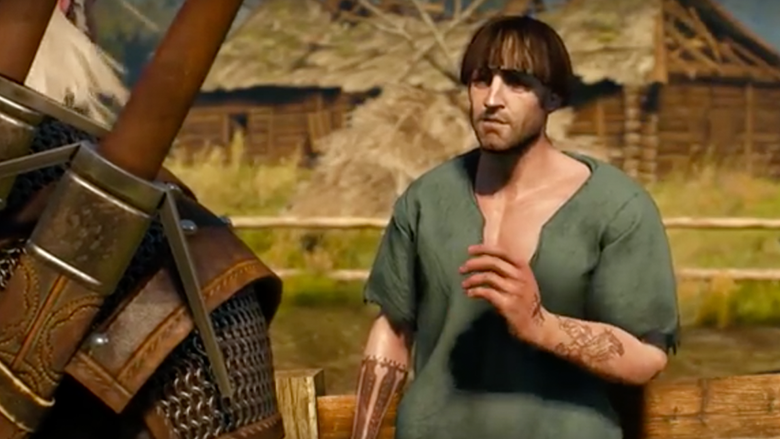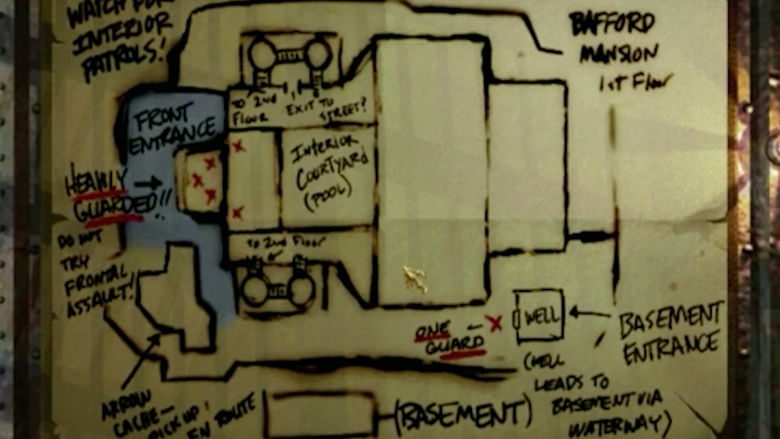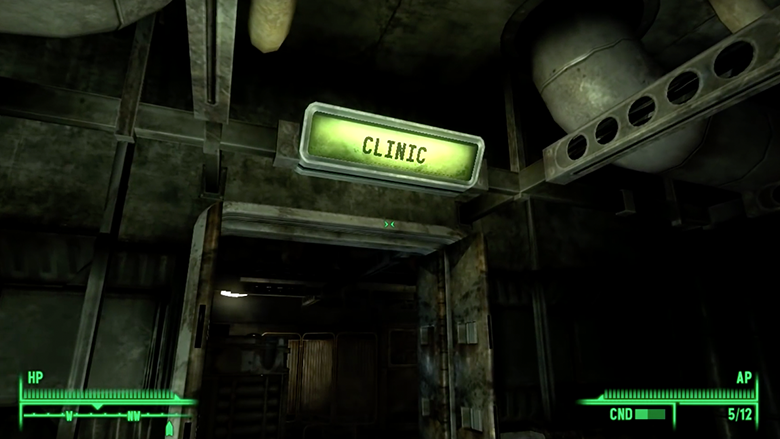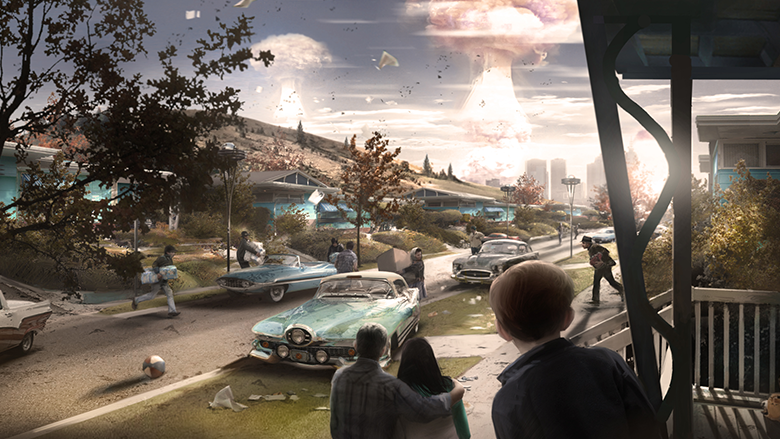Mark Brown, an indie developer and editor of the Pocket Gamer resource, told why a too straightforward navigation system in games is evil, as part of the Game Maker’s Toolkit video cycle. With the author’s permission, we have prepared a text version of the material in Russian. We share.
The first thing I did when I came out of Shelter 111 in Fallout 4 was deactivate the main quest. And when someone gave me a mission, I deactivated it, too.
I make such slightly inappropriate jokes because I just played The Witcher 3. And I had a feeling all the way that the navigation system in the game — certainly useful, appropriate, with all these commands in the corner of the screen, marks on the mini-map, a magic GPS that leads directly to the next location — kind of … spoiled the gaming experience.
Take, for example, a man with a funny hairstyle. When he explains where to go next, he says: “Did you see a small pond near the village? A path departs from it. Follow it until you reach the stone. Go around him in a circle and go into the forest. You get to the old cart, and you’re there.”

The Witcher 3
Everything is clear. Pond, rock, cart. Go ahead! But as soon as the conversation ends, a dotted line appears on the minimap. So I’m following it. I find myself near a pond, and then I need to find… “A big stone,” says Geralt. Oh, my God, Geralt, that’s what I was going to say!
Quests in The Witcher 3 are often interesting, funny and well thought out. But to get to them, you have to stupidly move from one point to another. At the same time, you do not have the opportunity to fully immerse yourself in the wonderful world that CD Projekt Red has created. It is very difficult to enjoy the atmosphere if most of the time you are busy interacting with an artificial in-game add-on, from which there is no escape.
But non-linear games with large open worlds have not always been like this. Now it’s hard to believe, but once there were no floating arrows and mini-maps in them. Take Deus Ex as an example. When Paul Denton (Paul Denton, one of the main characters of the computer game Deus Ex, — approx. editors) says that he has a map for you, he just means that now there is a map with a satellite image of the location in your things. You have to carefully observe and compare the details to understand where you are and where to go.

Map in Thief
It’s the same with the first Thief. The cards in this game are just rough sketches, scratched out with notes and drawings.
Or take The Elder Scrolls III: Morrowind. The player has a map, but only those areas where he has already visited are displayed on it. So if you need to get somewhere, then first you have to ask someone how to get there, or look through diary entries, or look at road signs. The player is forced to become part of the game world. He does not walk along the path of bread crumbs, but plots his own routes, and often it ends with the fact that along the way he finds various secrets and surprises.
Very few games follow this approach to navigation.

Map in Miasmata
The Miasmata scientific survival simulator, for example, offers the player a map made of scraps of paper, where the locations he has already visited are displayed. But the current position of the character on the map is not indicated until he finds a place with a good overview and determines with the help of triangulation and two already known points where he is (triangulation in this context is a method of determining the position in space by constructing triangles, — approx. editorial offices). That is, the hero does not know where he is until he finds a “sausage”.
In order to simply move through such a game world, certain skills and determination are required. But when you get to your destination, you get a strong sense of satisfaction.
Oh well. These are all intricate retro toys and conceptual indies. And what should modern AAA games with an open world and a constantly updated map do if they want to make life easier for the player?

Assassin’s Creed IV: Black Flag
Additional quests. They solve navigation problems and help the player to really immerse themselves in the game world. Like the same treasure maps in games like Red Dead Redemption, Skyrim and Assassin’s Creed IV: Black Flag. It looks like this: the player is given a piece of paper that should lead him to the hidden valuables. A hill, a tree or a stone is schematically drawn on it, and nothing more. We will have to study the area properly and find real equivalents of what is depicted on paper.
The player is given no hints, no markers on the map — nothing. It’s fun, because as a result, you have to honestly explore and discover the game world. An additional bonus — the reward is postponed. For example, you have to look for keys to open the right locker in Yakuza, or hit the “Divine Cubes” to open the “Divine Chest” in Skyward Sword. Additional obstacles on the way to reward only increase the pleasure.
I always really appreciate techniques like the ones described above in games. They give you a chance to slow down, get into the situation and figure everything out yourself.

“Divine Cube” in Skyward Sword
Another way to encourage the player to thoughtfully explore the world is to arrange a “garbage hunt” for him (a game in which participants must find and collect certain items in a limited amount of time — approx. editorial offices). Fans also call it hidden or unlisted quests.
One of the most memorable moments in Fallout 3 for me was associated with the Anchorage Memorial. I hacked into the computer and found a note. It reported a hiding place behind a broken door on the side of the service entrance. To get to him, I only had to find a safe in the floor of the clinic.
How did I find the clinic? Well, for starters, there was an inscription “Clinic” on the door. This helped a lot. And inside there was an operating table, X-rays on the wall, a dressing screen and a scalpel in the locker.

Fallout 3
Obviously, this approach allows you to get to know the world in a much more organic way than traditional navigation systems.
Okay, let’s move on. There was a part inside the safe with which I opened the door. Behind this door were all sorts of useful things, keys and a note that led me to the refrigerator. I found it, opened it and got my prize: a bunch of bottle caps and… a recipe for a swamp cake? As it turned out later, the recipe is an “Easter egg”, such an internal joke only for their own. Well, let it be! The real reward was the opportunity to strain the brain, study the environment and follow the prompts, and not walk along the path of bread crumbs.
For these reasons, I wander through the wastelands of Fallout 4 with the pointers turned off and without quest markers. I want to be guided by my own curiosity, not by a compass. I want to find interesting notes and participate in the “garbage hunt”. I want to be guided only by my own ingenuity. I want to see the silhouette of a building on the horizon and go check out what’s interesting inside. And when I find a note that says “Last night I found the mayor’s body in the bathroom. I blocked the door so that my wife wouldn’t find it,” then I want to find the bathroom by the icon on the door, not by the signs.

Fallout 4
It should be noted here that I have not made much progress in the game. I’ve been playing Fallout 4 for 10 hours and have only completed 2 quests completely. The game is simply not designed to be played without navigation. Like Witcher 3. Of course, you can turn off all the prompts, but then another guy will tell you something in the spirit: “The patrol got lost on the southern shore of Lake Morechko.” And then you realize that you have no signs, no names on the map. And there is no one to ask for directions. So you’re going to try to find Morechko yourself, and you’re going to end up bumping into a bandit camp, and you’re going to run, and… oh my God, is that a bear?! Something clearly went wrong.
It’s still fun to play at the same time. Yes, it would be ideal if such games were playable and without pointers on the map. But after all, navigation can always be turned back on — if you really get lost or want to quickly go through a segment of the game.
At the same time, for complete happiness, of course, I would like more additional tasks that are not reflected on the map or in the list of quests. They allow you to really immerse yourself in the game world. They allow you to move forward due to the fact that you observe and independently explore the world, and not stupidly walk along a thin dotted line.
Source: Mark Brown’s blog
Translated by Irina Smirnova
